Cumin Chronicles Spice Trail: India's Epic Trading Adventure
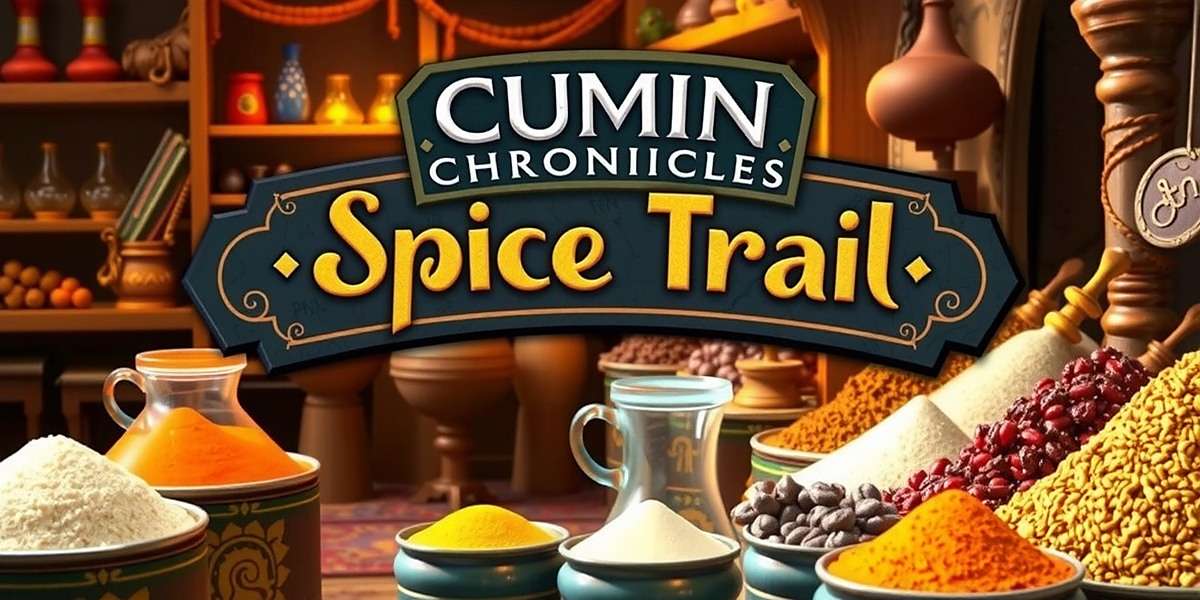
Introduction to Cumin Chronicles Spice Trail
Cumin Chronicles Spice Trail is not just another mobile game – it's a cultural phenomenon that has taken India by storm since its release in November 2021. Developed with meticulous attention to historical detail and a deep respect for Indian traditions, this game offers players an immersive journey through the golden age of India's spice trade.
Set primarily during the flourishing period of the Mughal Empire and the Vijayanagara Kingdom, Cumin Chronicles Spice Trail allows players to experience the thrill and challenges of being a spice merchant in ancient India. From the bustling markets of Agra to the coastal ports of Calicut, every aspect of the game has been designed to reflect the rich cultural heritage of the Indian subcontinent.
What truly sets Cumin Chronicles Spice Trail apart is its unique blend of entertainment and education. While players enjoy the strategic gameplay, they also learn about India's historical trade routes, cultural practices, and the significant role spices played in shaping the nation's history and economy.
Key Game Statistics
The development team behind Cumin Chronicles Spice Trail worked with a team of historians, anthropologists, and cultural experts from across India to ensure authenticity. This collaboration has resulted in a game that not only entertains but also educates players about India's rich trading history and diverse cultural practices.
From the accurate representation of historical marketplaces to the inclusion of traditional music and art forms, every detail in Cumin Chronicles Spice Trail reflects a deep appreciation for India's heritage. This commitment to authenticity has resonated strongly with players, making it one of the most beloved homegrown mobile games in recent years.
Whether you're a history enthusiast, a strategy game fan, or simply someone looking to experience a slice of Indian culture, Cumin Chronicles Spice Trail offers something for everyone. Its widespread appeal across different age groups and regions of India is a testament to its engaging gameplay and cultural relevance.
Gameplay Mechanics of Cumin Chronicles Spice Trail
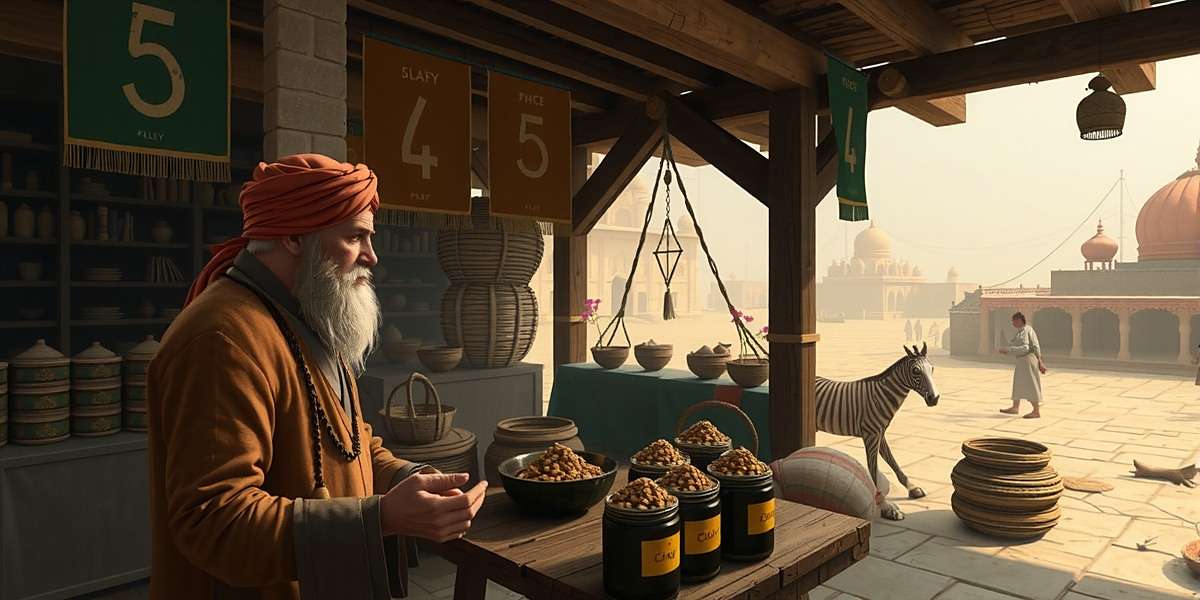
The gameplay of Cumin Chronicles Spice Trail is designed to be both accessible to new players and deep enough to challenge seasoned strategists. At its core, the game revolves around building and managing a successful spice trading business, but it incorporates many layers of complexity that keep players engaged for months on end.
Players begin their journey as a small-time trader with a modest cart of spices and limited resources. The ultimate goal is to build a trading empire that spans the length and breadth of the Indian subcontinent, with connections to distant lands through the ancient trade routes.
Core Gameplay Elements
1. Spice Trading Dynamics
The heart of Cumin Chronicles Spice Trail lies in its realistic trading system. Each region in the game specializes in certain spices, and market prices fluctuate based on supply and demand, seasonal variations, and historical events.
Players must carefully study market trends and plan their routes accordingly. For example, black pepper might fetch a high price in Delhi but is abundant and cheap in Kerala. Similarly, saffron from Kashmir commands premium prices in southern markets. Understanding these regional variations is key to building a successful trading business.
Common spices in the game include cumin (of course!), turmeric, cardamom, cloves, cinnamon, black pepper, saffron, and nutmeg, each with its own trading characteristics and historical significance.
2. Travel and Exploration
As players progress in Cumin Chronicles Spice Trail, they unlock new trade routes and cities to explore. The game features over 50 historically accurate locations across India, from the Himalayan foothills to the tropical Malabar Coast.
Travel between cities isn't without risks, however. Players must contend with bandits, harsh weather conditions, and political unrest that can disrupt their journeys. Investing in better transportation – from bullock carts to camel caravans – and hiring guards becomes essential as traders expand their operations.
3. Relationship Management
Success in Cumin Chronicles Spice Trail isn't just about buying low and selling high – it's also about building and maintaining relationships with key figures in each region. Rulers, local merchants, and guild leaders can offer valuable insights, special trading privileges, or protection from market fluctuations.
Players must learn the art of negotiation and gift-giving, understanding the cultural nuances of each region. A gift that delights a Rajput king might not impress a South Indian Nayak, requiring players to adapt their approach based on local customs.
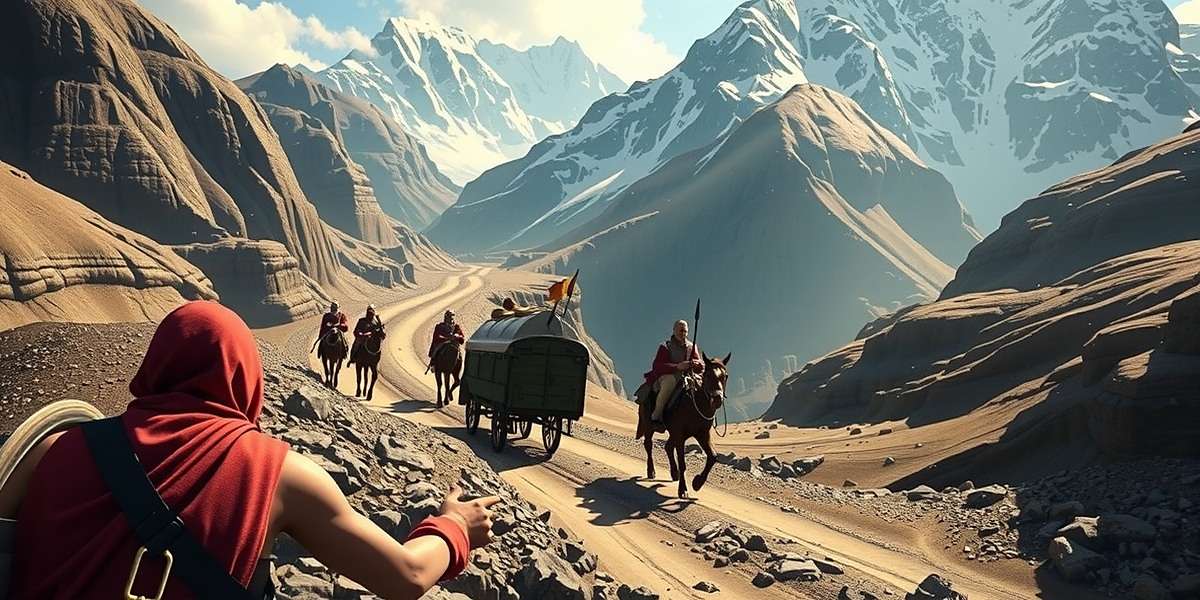
4. Business Expansion
As profits grow, players can invest in various assets to expand their trading empire. This includes establishing warehouses in key cities, purchasing spice plantations, and building trading posts along important routes.
Each investment comes with its own risks and rewards. A warehouse in a major city reduces storage costs but requires protection from thieves, while a remote spice plantation might yield high profits but is vulnerable to natural disasters and local conflicts.
5. Dynamic Events System
One of the most praised features of Cumin Chronicles Spice Trail is its dynamic events system that keeps the gameplay fresh and unpredictable. These events range from local festivals that boost spice prices to political upheavals that disrupt trade routes.
Natural events like monsoons, droughts, and floods also affect the availability and price of spices, requiring players to adapt their strategies constantly. Historical events, such as the arrival of foreign traders or royal weddings, create unique opportunities for savvy merchants.
6. Player Progression
Players progress through various merchant ranks in Cumin Chronicles Spice Trail, starting as a "Pheriwala" (pedlar) and working their way up to "Seth" (wealthy merchant) and eventually "Mahajani" (banker-merchant). Each rank unlocks new gameplay features, trading privileges, and access to more exclusive spices and routes.
This progression system gives players clear goals to strive for while unlocking new content that keeps the game engaging for long-term players. The highest ranks even allow players to influence regional politics and shape trade policies, adding a whole new layer of strategic depth.
7. Mini-Games and Activities
To add variety to the gameplay, Cumin Chronicles Spice Trail includes numerous mini-games and activities related to spice trading. These include negotiating with merchants, appraising spice quality, managing caravan supplies, and participating in local festivals.
These mini-games not only provide a break from the main trading gameplay but also teach players about various aspects of spice trading, from quality assessment to cultural practices associated with different spices.
Download Statistics and Regional Popularity
Since its launch in November 2021, Cumin Chronicles Spice Trail has achieved unprecedented success in the Indian mobile gaming market. The game crossed 10 million downloads within its first month, a milestone that took many established games years to reach.
As of 2023, the game has been downloaded over 75 million times worldwide, with more than 62 million of those downloads coming from within India. This makes it one of the most downloaded Indian-developed mobile games of all time, a testament to its widespread appeal across the country.
The game's popularity is not limited to any particular demographic, attracting players of all ages, from teenagers to adults. Its unique combination of educational content and engaging gameplay has made it a favorite among families, with many parents appreciating the historical and cultural knowledge their children gain while playing.
Regional Breakdown in India
Cumin Chronicles Spice Trail has found enthusiastic players across all regions of India, though certain states have shown particularly strong adoption:
- Maharashtra - 14.2 million downloads (23% of total Indian downloads)
- Uttar Pradesh - 10.5 million downloads (17% of total Indian downloads)
- Tamil Nadu - 8.7 million downloads (14% of total Indian downloads)
- Karnataka - 6.8 million downloads (11% of total Indian downloads)
- Gujarat - 5.5 million downloads (9% of total Indian downloads)
- West Bengal - 4.9 million downloads (8% of total Indian downloads)
- Rajasthan - 3.2 million downloads (5% of total Indian downloads)
- Other states - 8.2 million downloads (13% of total Indian downloads)
Active Player Demographics
The game's popularity extends beyond India's borders as well, with significant player bases in countries with large Indian diaspora communities. The United States, United Kingdom, Canada, Australia, and Singapore have all seen substantial downloads, introducing Indian culture and history to a global audience.
One of the key factors contributing to the game's widespread adoption is its optimization for a wide range of devices. From high-end smartphones to more affordable models, Cumin Chronicles Spice Trail runs smoothly on most Android and iOS devices available in the Indian market, ensuring that it remains accessible to players across different economic backgrounds.
Cumin Chronicles Spice Trail follows a freemium model, allowing free downloads with optional in-app purchases. These purchases are primarily for cosmetic items, convenience features, and special spice packs, with no pay-to-win elements that would disadvantage non-paying players.
This fair approach has resonated with the Indian gaming community, resulting in a healthy conversion rate of approximately 6.8% of players making in-app purchases – significantly higher than the industry average of 2-3% for mobile games in India. The game's revenue model demonstrates that Indian players are willing to pay for quality content that respects their time and doesn't create an uneven playing field.
Perhaps even more impressive than the download numbers is the game's player retention rate. With over 72% of players returning daily and 89% returning weekly, Cumin Chronicles Spice Trail has achieved engagement levels that most mobile games can only dream of. This high retention is attributed to the game's regular content updates, seasonal events, and strong community features that keep players invested in their trading empires.
Localization and Regional Adaptations
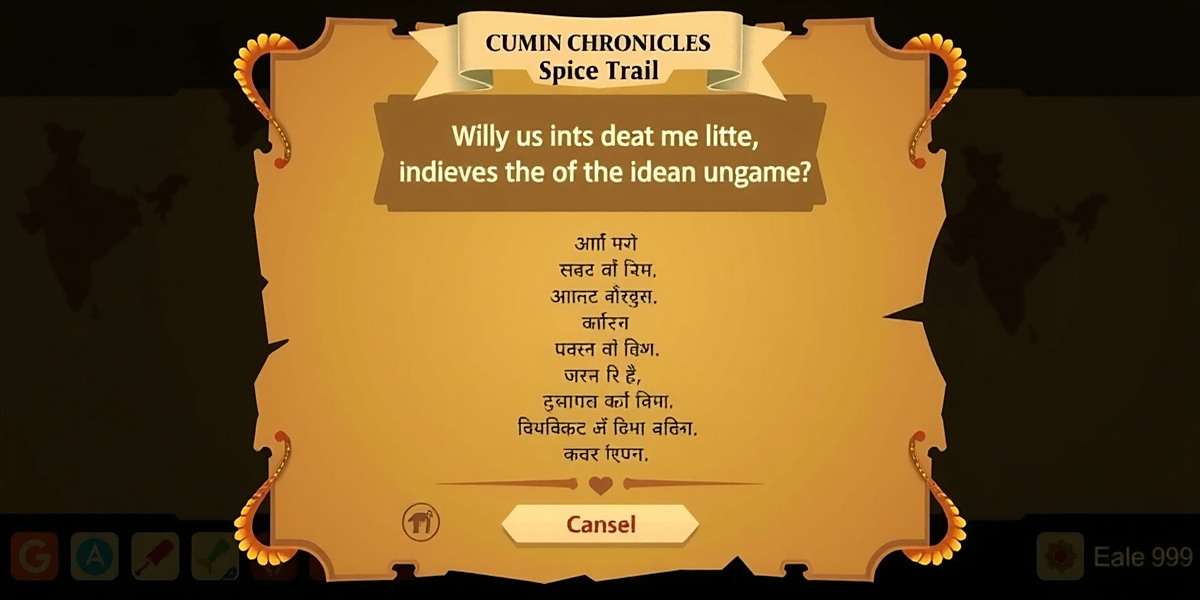
One of the most celebrated aspects of Cumin Chronicles Spice Trail is its commitment to authentic localization that respects India's linguistic and cultural diversity. Unlike many mobile games that offer only Hindi and English, this game has gone to great lengths to make the gameplay experience accessible and relevant to players from all regions of India.
Recognizing that India is home to hundreds of languages and dialects, the development team worked with native speakers and cultural experts to create localized versions that feel natural and authentic, not just direct translations.
Supported Languages
Cumin Chronicles Spice Trail currently supports 15 Indian languages, with more planned for future updates:
- Hindi
- English
- Bengali
- Telugu
- Marathi
- Tamil
- Urdu
- Gujarati
- Kannada
- Malayalam
- Punjabi
- Odia
- Rajasthani
- Assamese
- Maithili
Each language version has been carefully crafted to ensure that historical terms, cultural references, and gameplay instructions are accurately translated and culturally appropriate. For example, the term for "merchant" varies across regions – "Seth" in North India, "Chettiar" in Tamil Nadu, "Bania" in Gujarat – and the game uses the appropriate term based on the player's language selection.
Regional Content Variations
Beyond language translation, Cumin Chronicles Spice Trail incorporates subtle regional variations that make the game feel personally relevant to players from different parts of India:
1. Musical Score
The game features a dynamic soundtrack that changes based on the player's location within the game world. In North India, players hear traditional instruments like the sitar and tabla, while in the South, Carnatic music with veena and mridangam takes center stage. Eastern regions feature Baul and Rabindra Sangeet influences, while Western India incorporates Garba and Dandiya rhythms.
This attention to musical detail has been widely praised by players, with many noting that hearing familiar regional music enhances their immersion in the game world.
2. Visual Elements
Character designs, architecture, and clothing in Cumin Chronicles Spice Trail reflect regional styles and historical periods. A merchant in Rajasthan wears traditional pagri (turban) and angarkha, while a trader in Kerala is depicted in mundu and neriyathu. Marketplaces feature regional architectural styles, from the havelis of North India to the nalukettu houses of Kerala.
3. Culinary References
Food items that appear in the game – from the snacks merchants eat during their journeys to the feasts at royal courts – reflect regional culinary traditions. Players might encounter pani puri in North India, vada pav in Maharashtra, paniyaram in Tamil Nadu, or pitha in Bengal, adding another layer of cultural authenticity.
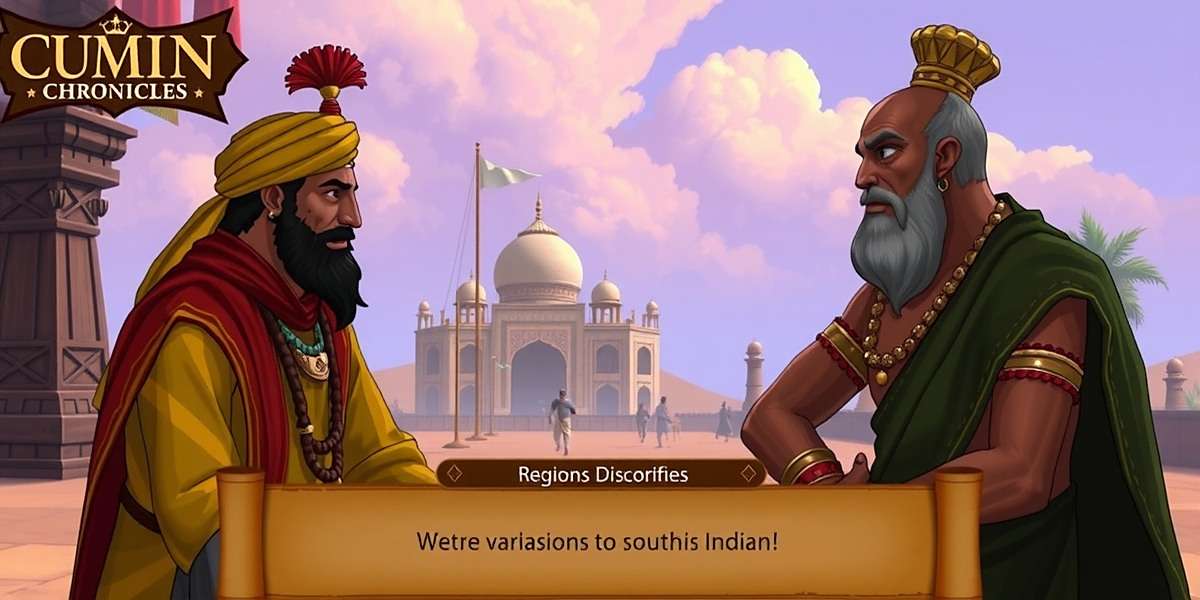
4. Historical Figures
Different regions feature interactions with historical figures relevant to their local history. Players in Bengal might encounter the nawabs of Murshidabad, while those in the South interact with Vijayanagara kings. This approach ensures that players from all regions can engage with historical figures they learned about in school or heard about in family stories.
The localization efforts have paid off handsomely, with non-English language versions accounting for approximately 73% of total gameplay time. This statistic underscores the importance of linguistic accessibility in reaching India's diverse gaming audience.
Educational institutions across India have particularly praised the game's multilingual approach, noting that it helps students learn about historical trade practices in their mother tongue, making complex concepts more accessible. Several state governments have even considered incorporating Cumin Chronicles Spice Trail into their history and social studies curricula as an engaging educational tool.
The game's commitment to authentic localization has also earned it recognition from cultural organizations, including the National Council of Educational Research and Training (NCERT) and various state-level language academies, which have commended its efforts to promote Indian languages and cultural heritage through digital media.
Localized Events and Festivals
One of the most beloved features of Cumin Chronicles Spice Trail is its celebration of India's diverse cultural festivals through in-game events. These events not only add excitement and variety to the gameplay but also serve as a platform for showcasing India's rich cultural heritage to players across the country and around the world.
Each event is meticulously researched and designed in collaboration with cultural experts from the relevant regions, ensuring authentic representation while making the gameplay engaging for all players, regardless of their familiarity with the festival.
Major Festival Events
1. Diwali Festival of Lights
Diwali is one of the biggest events in Cumin Chronicles Spice Trail, spanning a full week in October or November. During this time, game cities are adorned with diyas (oil lamps) and rangoli patterns, creating a festive atmosphere.
Special gameplay features include: • Increased demand for luxury spices used in Diwali celebrations • Fireworks displays that players can观赏 • Lakshmi puja ceremonies that grant trading bonuses • Regional variations like rangoli competitions in North India and kali puja in Bengal
Players can collect special Diwali items and exchange them for rare spices or decorative items for their trading posts. The event typically concludes with a grand feast where players can interact with special NPCs based on historical figures known for their Diwali celebrations.
2. Pongal / Makar Sankranti Celebrations
Celebrated in mid-January, this harvest festival is observed differently across India, and the game reflects these regional variations: • In Tamil Nadu, players participate in Pongal celebrations with rice cooking competitions that boost food supplies for caravans • In Maharashtra and Gujarat, kite-flying mini-games allow players to win special trading bonuses • In Punjab, Lohri celebrations feature bonfires that can purify spices, increasing their value • In Assam, Magh Bihu feasts provide opportunities to network with wealthy merchants
Common across all regions is an increase in demand for spices used in traditional sweets and dishes associated with the festival, creating profitable trading opportunities for savvy players.

3. Holi Festival of Colors
Holi brings vibrant colors to Cumin Chronicles Spice Trail in February or March. The game world transforms with colorful powders, water fights, and festive music that varies by region.
Gameplay features include: • Color-throwing mini-games that can temporarily boost trading relationships • Special "gulal" (colored powder) items made from spices that grant various bonuses • Holi bonfires that players can contribute spices to, earning rewards • Regional specialties like the Lathmar Holi of Mathura where players can participate in unique challenges
Many players particularly enjoy how the Holi event allows them to interact with NPCs in more lighthearted ways, breaking from the usual business-focused gameplay.
4. Onam Festival
Exclusive to the Kerala region in the game, the Onam event in August or September features: • Intricate pookalam (floral carpet) designs that players can create to attract special merchants • Vallamkali (boat race) mini-games with trading rewards • Onam sadya (feast) preparation that requires specific regional spices • The appearance of Mahabali as a special NPC who offers unique trading opportunities
This event has been praised for its accurate representation of Kerala's unique cultural traditions and has introduced many non-Keralite players to the rich heritage of Onam.
5. Durga Puja / Navratri
Celebrated in September or October, this festival is represented with regional variations: • In West Bengal, elaborate Durga Puja pandals where players can trade special ritual items • In Gujarat, Garba and Dandiya dance mini-games that improve merchant relationships • In Karnataka, Mysuru Dasara processions featuring decorated elephants that players can accompany • In North India, Ramlila performances that provide historical context for certain trade routes
Across all regions, there is increased demand for turmeric, used in many of the festival's rituals, creating a market trend that savvy players can capitalize on.
6. Eid-ul-Fitr
Marking the end of Ramadan, this festival in Cumin Chronicles Spice Trail features: • Special markets selling traditional sweets and spices used in Eid celebrations • Charity events where players can donate spices to earn goodwill and trading benefits • Regional variations reflecting Eid celebrations in different parts of India • Increased trade opportunities with Mughal-era merchants and rulers
The event has been praised for its respectful representation of Islamic traditions in India and for educating players about the important role of Muslim merchants in India's trading history.
These cultural events have become a major draw for players, with participation rates often exceeding 80% of active users during festival periods. Many players have shared that these events have helped them learn about regional festivals they were unfamiliar with, promoting cross-cultural understanding through gameplay.
The development team takes great care to ensure that each event is represented with cultural sensitivity and historical accuracy, consulting with experts from each region to avoid stereotypes or misrepresentation. This approach has earned Cumin Chronicles Spice Trail praise for its role in preserving and promoting India's diverse cultural heritage in a digital format.
Player Reviews and Testimonials
With over 3.5 million reviews across various app stores, Cumin Chronicles Spice Trail has maintained an impressive average rating of 4.8 out of 5, making it one of the highest-rated mobile games in India. This exceptional rating is a testament to the game's quality, cultural relevance, and engaging gameplay.
Players from all walks of life and regions of India have shared their experiences with the game, highlighting different aspects that resonate with them personally. What's particularly striking is how the game appeals to different age groups and demographics, from teenagers to senior citizens, each finding something meaningful in the gameplay.
"As a Gujarati housewife who loves cooking with traditional spices, Cumin Chronicles Spice Trail feels like a game made just for me! I never thought I'd enjoy a trading game so much, but the attention to detail in how different spices are portrayed is amazing. The Gujarati language option is perfect - not just translated but using the right terms we use in our kitchen. My children laugh when I tell them I'm 'negotiating better prices for turmeric' in the game, but it's actually teaching them about our family's spice business history!"
"Being a history teacher, I'm always looking for engaging ways to teach my students about India's past. Cumin Chronicles Spice Trail is a revelation! The historical accuracy is impressive - from the trade routes to the clothing styles to the political dynamics of the time. I've even started using it as a teaching aid in my class. My students are more interested in Mughal trade policies now than ever before! The Rajasthani language version has some wonderful local expressions that make the game feel truly authentic."
"I've been playing Cumin Chronicles Spice Trail for over a year now, and what keeps me coming back is how it celebrates our Indian culture. The Tamil language option is excellent, and I love how the game incorporates regional festivals. The Pongal event last year was so detailed - they even included the traditional sweet pongal recipe! My only suggestion would be to add more female merchant characters from history, as there were many successful women traders in South India whose stories deserve to be told."
"As someone who grew up hearing stories of my grandfather's spice trading business in East Bengal, Cumin Chronicles Spice Trail brings those stories to life in a remarkable way. The attention to detail in the Bengal region of the game is incredible - from the Howrah market representations to the traditional Bengali trading practices. The Durga Puja event is absolutely spectacular and captures the essence of our biggest festival perfectly. I've introduced this game to my entire family, and we often compete to see who can build the most successful trading empire!"
"Living abroad, Cumin Chronicles Spice Trail has helped me share my Indian heritage with my children. They love the gameplay, and I love that they're learning about our culture and history while playing. The Gujarati language option allows them to practice the language skills they've been learning from their grandparents. It's amazing to see them get excited about spices and trade routes that I learned about as a child in India. This game is more than entertainment - it's a cultural bridge for our family."
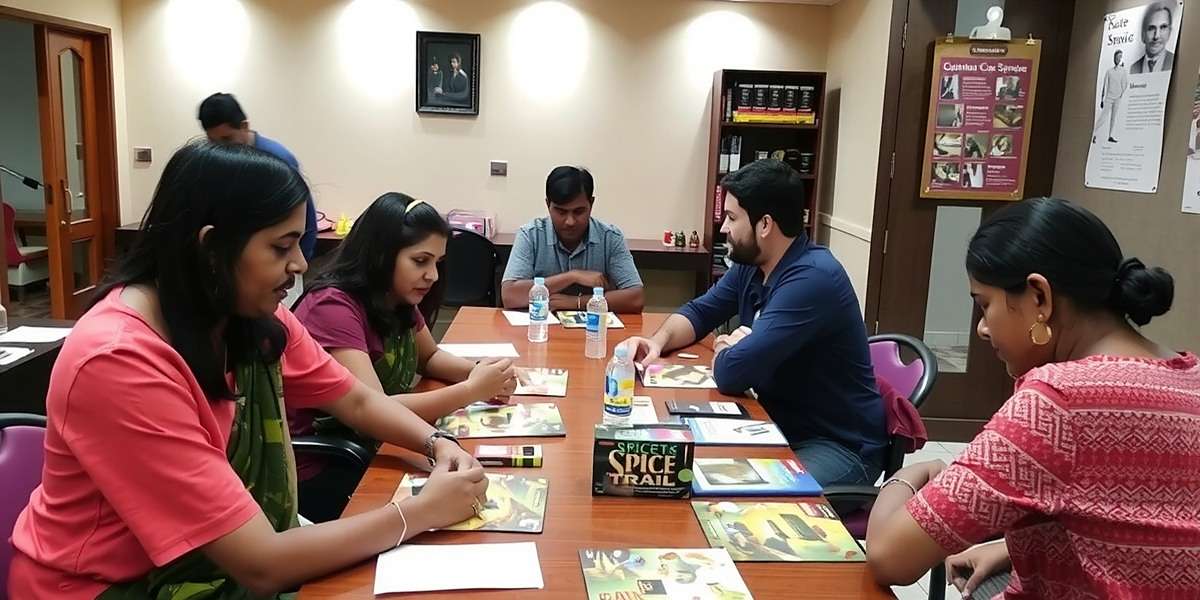
"Cumin Chronicles Spice Trail does an excellent job of capturing the grandeur of Mughal-era India. As someone from Uttar Pradesh, I appreciate how accurately places like Agra, Lucknow, and Varanasi are represented. The Hindi dialogues feel authentic, not like the stilted translations we often see in games. The only reason I didn't give 5 stars is that I'd love to see more representation of Awadhi culture specifically, which has such a rich trading history. Overall though, it's the best Indian game I've played in years."
While the overwhelming majority of reviews are positive, some constructive criticism has helped shape the game's development. Common suggestions include adding more regions, increasing the frequency of certain events, and improving performance on older devices. The development team has been responsive to this feedback, regularly incorporating player suggestions into updates.
Notably, Cumin Chronicles Spice Trail has received praise from educational institutions across India. Several schools in Rajasthan, Kerala, and West Bengal have incorporated the game into their history and economics curricula, using it to teach students about ancient trade practices, regional cultures, and economic principles in an engaging way.
Cultural organizations have also recognized the game for its role in preserving and promoting India's heritage. The game was awarded the "Best Cultural Representation in a Digital Game" by the National Heritage Board in 2022, a testament to its success in balancing entertainment with cultural education.
Perhaps the most meaningful feedback comes from players who mention how the game has helped them connect with their roots or learn more about other regions of India. Many players from North India have shared that they now have a better understanding of South Indian festivals, while players from urban areas have gained appreciation for rural trading practices, demonstrating how Cumin Chronicles Spice Trail is fostering greater cultural understanding across India's diverse population.
Player Community and Discussions
The Cumin Chronicles Spice Trail community has grown into a vibrant ecosystem of players, enthusiasts, and cultural experts who share a passion for the game and India's rich trading history. This community extends beyond the game itself, creating a space where players can connect, share knowledge, and celebrate Indian culture.
The developers have fostered this community through regular engagement, transparent communication about updates, and recognition of player contributions, creating a sense of ownership and pride among the player base.
Online Community Platforms
1. Official Social Media Groups
The official Facebook group for Cumin Chronicles Spice Trail has grown to over 2.8 million members, making it one of the largest mobile game communities in India. The group is highly active, with thousands of posts daily covering gameplay strategies, cultural discussions, and real-world spice trading knowledge.
Regional subgroups have also emerged, allowing players to connect with others from their state or linguistic group. These regional groups often organize virtual events tied to local festivals and share region-specific strategies that leverage local knowledge of spices and trading practices.
2. YouTube and Streaming Communities
There are over 1,200 active YouTube channels dedicated to Cumin Chronicles Spice Trail, with content ranging from gameplay tutorials to deep dives into the historical accuracy of the game. Several of these channels have amassed over 1 million subscribers, demonstrating the game's strong appeal as a content creation platform.
Content creators produce videos in multiple Indian languages, making strategy guides and game updates accessible to non-English speakers. Many creators also blend gameplay with real-world information about spices, visiting local markets and interviewing spice merchants to provide additional context for the game.
Live streaming on platforms like YouTube Gaming and Facebook Gaming has also become popular, with players showcasing their trading strategies and participating in community challenges. Some of the largest streams attract tens of thousands of concurrent viewers during major in-game events.

3. Reddit and Gaming Forums
The game's Reddit community has over 450,000 members who engage in detailed discussions about game mechanics, historical accuracy, and suggestions for future updates. This community is known for its analytical approach to the game, with players creating complex spreadsheets to track market trends and optimize trading routes.
Indian gaming forums like IGN India and GamingBolt also feature active sections dedicated to Cumin Chronicles Spice Trail, with discussions often expanding beyond the game to include real-world spice trading history and cultural practices.
Offline Community Events
What truly sets the Cumin Chronicles Spice Trail community apart is its transition from online to offline interactions. Player-organized meetups have become a regular occurrence in major cities across India, bringing together players to share strategies, participate in tournaments, and celebrate their shared love for the game and Indian culture.
These meetups often feature: • Live gameplay competitions with spice-themed prizes • Guest lectures from historians and spice experts • Traditional food tastings featuring spices from the game • Workshops on historical trading practices • Cultural performances reflecting the regions featured in the game
Notable community events have included: • A grand meetup in Ahmedabad coinciding with the Uttarayan festival, featuring kite flying and Gujarati snacks • A Chennai gathering during Pongal with traditional music and pongal cooking demonstrations • A Kolkata event during Durga Puja with cultural performances and discussions on Bengal's trading history • A Delhi meetup at a historical haveli featuring Mughal-era cuisine and trading demonstrations
The largest meetup to date was held in Mumbai in 2022, attracting over 3,000 players and featuring appearances by the game's developers, historians, and even some well-known Indian chefs who demonstrated recipes using spices featured in the game.
Player-Generated Content
The creativity of the Cumin Chronicles Spice Trail community extends to player-generated content that enriches the game experience for everyone: • Fan Art: Players create stunning artwork depicting game characters, historical marketplaces, and regional scenes, often blending the game's aesthetic with traditional Indian art styles. The developers regularly feature exceptional fan art on the game's official social media channels. • Historical Guides: History enthusiasts in the community have created detailed guides expanding on the historical references in the game, providing additional context about ancient trade routes, historical figures, and cultural practices. Several of these guides have been incorporated into game updates. • Spice Recipes: Many players share real-world recipes using the spices featured in the game, creating a unique crossover between the virtual and real worlds. These recipes, often passed down through families, have become popular among community members looking to experience the spices beyond the game. • Fan Fiction: Creative writers in the community have crafted stories set in the Cumin Chronicles Spice Trail universe, exploring the backstories of game characters and imagining new trading adventures. The best stories are sometimes adapted into in-game lore updates. • Strategy Spreadsheets: Savvy players have created detailed spreadsheets tracking spice prices across regions and seasons, helping the entire community optimize their trading strategies. These resources are often shared freely on community platforms.
This vibrant community ecosystem has contributed significantly to the game's longevity and success. By fostering a space where players can connect over both gameplay and cultural appreciation, Cumin Chronicles Spice Trail has created more than just a game – it has built a community that celebrates India's rich heritage while having fun.
Indian Player Strategies and Guides
Indian players have developed a wealth of strategies and insights for mastering Cumin Chronicles Spice Trail, drawing on both gameplay experience and real-world knowledge of Indian spices and trading practices. These strategies, often shared through community platforms, reflect a deep understanding of both the game mechanics and the historical context that inspired them.
What's particularly fascinating is how regional players bring their local knowledge to the game, developing strategies that reflect the trading practices and spice specialties of their home regions.
Beginner's Guide to Successful Trading
Seasoned players recommend that new players focus on mastering these fundamentals before expanding their trading empires:
1. Start Small and Local
Begin by trading between nearby cities to build up your capital and understanding of market dynamics. Community wisdom suggests starting with just 2-3 cities in a single region to avoid becoming overwhelmed.
"Don't try to conquer all India at once," advises a veteran player from Pune. "Start with the Deccan region, learn how turmeric prices fluctuate between Pune and Hyderabad, then expand once you've built up your resources."
2. Master the Basics of Supply and Demand
Every region in Cumin Chronicles Spice Trail has spices that are abundant (and therefore cheaper) and spices that are scarce (and therefore more valuable). Learning these patterns is key to profitable trading.
For example: • Black pepper is abundant in Kerala but valuable in Delhi • Saffron is cheap in Kashmir but commands high prices in Chennai • Turmeric is plentiful in Andhra Pradesh but scarce in Punjab • Cardamom from Karnataka fetches premium prices in Bengal
3. Understand Seasonal Variations
Spice prices fluctuate with the seasons, just like in real life. Players who understand these patterns can make significantly more profit:
"During monsoon season in Kerala (June-September), black pepper harvests are abundant, so prices drop," explains a player from Kochi. "This is the perfect time to stock up. Then, when demand increases during the winter festivals in North India, you can sell at a huge profit!"
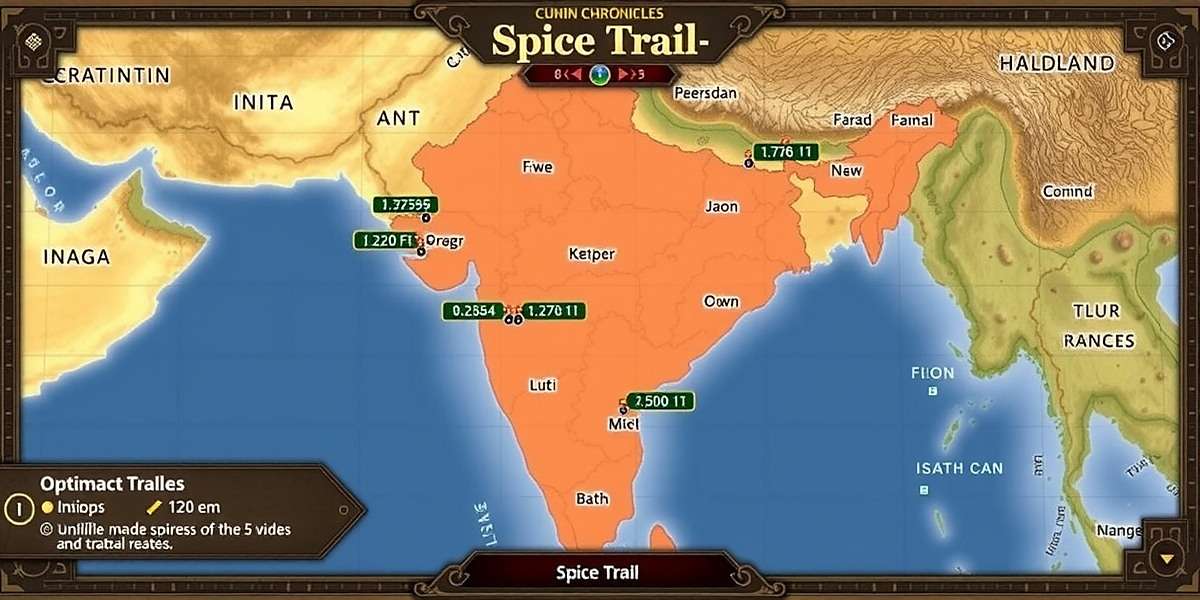
Regional Expert Strategies
Players from different regions have developed specialized strategies based on their local knowledge and understanding of regional spices:
North Indian Strategies
Players from North India excel at leveraging the region's Mughal-era trading networks: • Focus on saffron from Kashmir, which maintains high value throughout the subcontinent • Take advantage of the Delhi-Agra-Lucknow trade triangle, which offers consistent profits • Participate heavily in Diwali and Holi events, which drive up spice prices significantly • Build relationships with Mughal officials, who can grant exclusive trading rights
"The key in North India is understanding the royal court system," advises a player from Agra. "Gifts of high-quality saffron and cardamom to Mughal officials can unlock trade routes that other players can't access, giving you a huge advantage."
South Indian Strategies
South Indian players often dominate maritime trade routes and leverage the region's unique spices: • Master the monsoon trading cycles, which affect both prices and travel routes • Focus on pepper, cardamom, and cinnamon, which are South India's specialty • Build strong relationships with temple authorities, who are major consumers of spices • Participate in Pongal and Onam events for seasonal profit boosts
"In South India, you need to respect the monsoons," explains a player from Chennai. "During the rainy season, focus on inland trade between cities like Madurai and Bengaluru. When the seas calm, shift to coastal routes for bigger profits."
Western Indian Strategies
Players from Gujarat and Maharashtra often excel at long-distance trade and banking: • Utilize the historical trading networks between Mumbai, Ahmedabad, and Delhi • Focus on establishing warehouses to take advantage of price fluctuations • Participate in Makar Sankranti and Ganesh Chaturthi events • Develop banking relationships to access better loan terms for large shipments
"Gujarati merchants have always been bankers as well as traders," notes a player from Ahmedabad. "In the game, don't just trade spices – invest in banking when you can. The interest you earn can fund your biggest trading expeditions."
Eastern Indian Strategies
Players from Bengal and Odisha often specialize in riverine trade and unique regional spices: • Master the Ganges-Brahmaputra river trade routes for efficient transportation • Focus on turmeric, ginger, and regional spices like panch phoron • Participate in Durga Puja and Bihu events for maximum profits • Build relationships with local nawabs and rulers for exclusive trading rights
"The rivers are your best friend in East India," advises a player from Kolkata. "A well-timed river voyage with a cargo of high-quality turmeric can yield profits you wouldn't believe, especially just before Durga Puja when demand spikes."
Festival Event Strategies
Community guides for maximizing profits during festival events are highly valued and often shared widely: • Diwali: Stock up on luxury spices like saffron, cardamom, and cinnamon 2-3 weeks before the event. Focus trading on major cities where celebrations are largest. • Holi: Invest in turmeric and sandalwood, which see increased demand. Participate in all color-throwing mini-games to maximize relationship bonuses. • Pongal/Makar Sankranti: Focus on rice and sugarcane trading alongside spices, as these are also in high demand. Participate in regional mini-games for special rewards. • Durga Puja: Turmeric is king during this festival. Establish supply chains from Andhra Pradesh and Odisha to Bengal for maximum profits.
"The key to festival events is preparation," emphasizes a top player from Delhi. "Study the event calendar, predict which spices will be in demand, and position your warehouses accordingly. I usually start preparing for Diwali as early as September!"
Relationship Building Guide
Successful players know that building strong relationships is just as important as understanding market dynamics: • Rulers and Nobles: Gift rare spices from distant regions. North Indian rulers appreciate saffron and almonds, while South Indian kings value high-quality pepper and pearls. • Merchant Guilds: Offer consistent quality and fair prices. Guilds in Gujarat value punctuality, while those in Tamil Nadu prioritize personal relationships. • Temple Authorities: Donate spices used in rituals. Each region has specific preferences – research these before making offerings. • Village Chiefs: Provide practical goods like salt and metal tools alongside spices for better prices on local specialties.
"It's not just about giving expensive gifts," explains a veteran player from Jaipur. "It's about understanding what each person values. A Rajput king might appreciate a rare sword more than spices, while a Tamil Nadu temple priest would value specific ritual spices above all else."
These player-developed strategies highlight how Cumin Chronicles Spice Trail has created a unique blend of entertainment and education. By drawing on real-world knowledge of Indian spices, regional cultures, and historical trading practices, players are not just mastering a game – they're engaging with their heritage in a meaningful way.
Future Updates and Developments
The development team behind Cumin Chronicles Spice Trail has outlined ambitious plans for the game's future, with several major updates scheduled over the coming year. These updates aim to expand the game's historical scope, add new gameplay features, and further enhance its cultural authenticity based on extensive player feedback.
The team has emphasized their commitment to maintaining the delicate balance between historical accuracy and engaging gameplay that has made the game so successful, while also introducing new elements that will keep long-term players engaged.
Upcoming Features
1. International Trade Expansion
One of the most highly anticipated updates will allow players to extend their trading networks beyond the Indian subcontinent, connecting with historical trading partners in: • Southeast Asia (Malaysia, Indonesia, Thailand) • The Middle East (Persia, Arabia) • East Africa (Zanzibar, Somalia) • Europe (Venice, Portugal, Netherlands)
This expansion will introduce new spices, cultural practices, and trading challenges that reflect the global nature of the historical spice trade. Players will need to navigate long sea voyages, negotiate with foreign merchants, and adapt to new trading practices and cultural norms.
"We're working with historians from these regions to ensure accurate representation," says the game's lead developer. "This expansion will show how Indian spices influenced global trade and culture, while also introducing players to new markets and opportunities."
2. Multiplayer Trading Hubs
Responding to one of the most requested features from the community, the developers plan to introduce multiplayer trading hubs where players can: • Trade directly with other players in real-time • Form trading alliances and caravans • Compete in regional trading competitions • Establish player-run markets and warehouses
This multiplayer component will add a new social dimension to the game, allowing players to leverage their unique regional knowledge and form strategic partnerships to maximize profits.
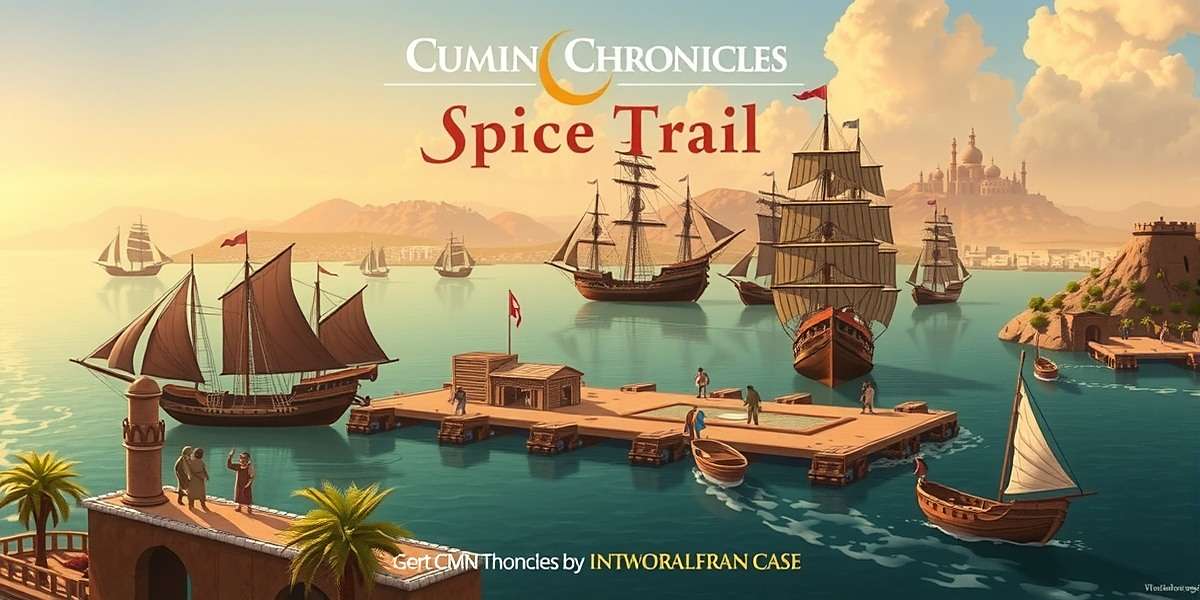
3. Enhanced Regional Content
Future updates will introduce more detailed content for underrepresented regions of India, including: • Northeast India, with its unique spices and trading practices • The Himalayan regions, featuring Tibetan-influenced trade routes • Coastal Odisha and Andhra Pradesh, focusing on maritime trade • The desert regions of Rajasthan, emphasizing camel caravans and oasis trading posts
The development team has been working with local historians, cultural experts, and community members from these regions to ensure authentic representation that highlights their unique trading histories and cultural practices.
4. Educational Mode
In response to requests from educational institutions, a new educational mode will be added that focuses on historical learning while maintaining gameplay appeal. This mode will include: • Detailed historical notes and references • Interactive maps of historical trade routes • Profiles of real historical merchants and rulers • Mini-documentaries about spices and their cultural significance • Classroom activities and discussion guides
This mode is designed to make Cumin Chronicles Spice Trail an even more valuable educational tool, allowing teachers to incorporate it into their curriculum while students still enjoy the gameplay experience.
5. Player-Generated Content Tools
Recognizing the creativity of the game's community, future updates will introduce tools that allow players to: • Create and share custom trade routes • Design unique spice blends with special properties • Develop regional events based on local traditions • Contribute to historical lore with community-voted additions
The best player-generated content will be featured in official game updates, giving the community a direct role in shaping the game's future.
Community Involvement in Development
The development team has emphasized their commitment to community-driven development, with several initiatives to gather player feedback: • Quarterly community surveys to identify priorities for updates • Focus groups with players from different regions of India • Historical accuracy review panels featuring both academics and passionate players • Beta testing programs for new features • Regular "Ask Me Anything" sessions with developers and historians
This collaborative approach has already resulted in several features being added to the game based on player suggestions, including additional regional languages, more accurate representations of certain historical figures, and new spices that were important in specific regions.
"Our players are our greatest resource," says the game's producer. "They bring a wealth of knowledge about their regional cultures and histories that we could never capture just through research. By working together, we're creating a game that truly reflects the diversity and richness of India's trading heritage."
With these ambitious plans for the future, Cumin Chronicles Spice Trail is poised to remain one of India's most popular and influential mobile games for years to come, continuing to educate and entertain players while celebrating India's rich cultural heritage.
Impact and Cultural Significance
Cumin Chronicles Spice Trail has achieved something rare in the mobile gaming world – it has become not just a popular game, but a cultural phenomenon that resonates deeply with Indian players. Its success lies in its ability to balance entertainment with education, challenge with accessibility, and historical accuracy with engaging gameplay.
What makes the game truly special is how it has tapped into something fundamental in Indian culture – a deep appreciation for spices, trading, and regional diversity. By placing these elements at the center of the gameplay experience, Cumin Chronicles Spice Trail has created a game that feels uniquely Indian, not just in setting but in spirit.
Why Cumin Chronicles Spice Trail Matters
In a gaming market dominated by foreign titles with Western settings and sensibilities, Cumin Chronicles Spice Trail stands out as a proudly Indian game that doesn't compromise on quality or depth. It demonstrates that games rooted in Indian culture can achieve both critical acclaim and commercial success.
The game's educational value cannot be overstated. In an era where many young Indians are becoming disconnected from their cultural heritage, Cumin Chronicles Spice Trail introduces them to historical trade practices, regional festivals, and cultural traditions in a way that feels relevant and engaging.
Perhaps most importantly, the game fosters a sense of national pride and cross-cultural understanding. Players from different regions gain appreciation for each other's traditions, while the game's international audience gains insight into India's rich history and culture. In this way, Cumin Chronicles Spice Trail is doing its part to preserve and promote India's heritage in the digital age.
As the game continues to evolve with new updates and expansions, it's clear that Cumin Chronicles Spice Trail is more than just a passing trend – it's a significant cultural achievement that will be remembered as a landmark in Indian gaming history.
Whether you're a history buff, a strategy game enthusiast, or simply someone looking to connect with Indian culture, Cumin Chronicles Spice Trail offers a rich, engaging experience that educates as it entertains, making it a must-play for anyone interested in India's fascinating history of spice trading.